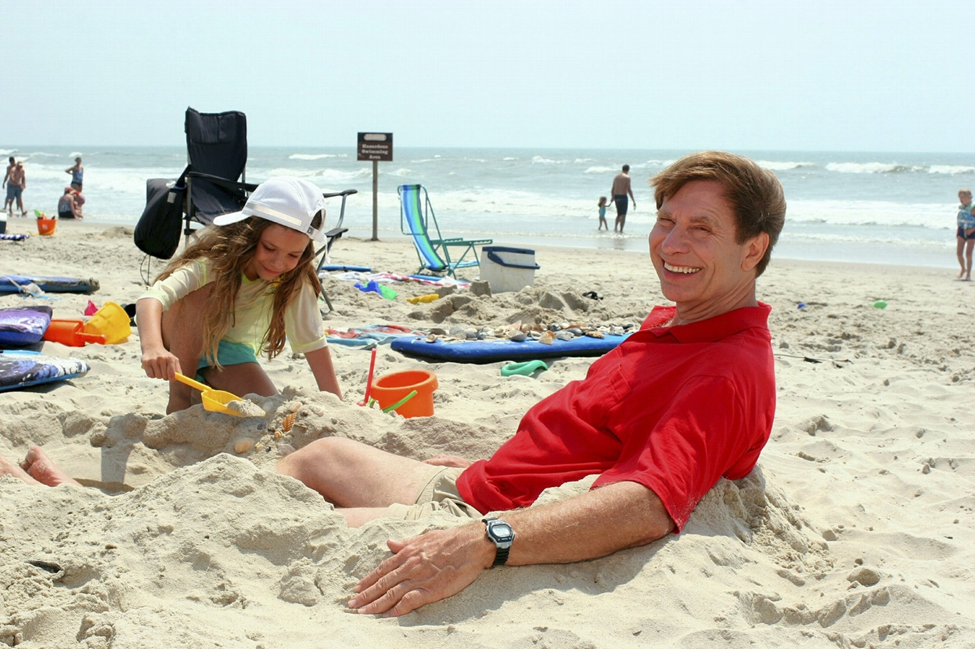Dr. Beach
DR. STEPHEN P. LEATHERMAN (“DR. BEACH”)
Dr. Stephen P. Leatherman is Professor and Director of the Laboratory for Coastal Research at Florida International University. He received his Ph.D. in Environmental (Coastal) Sciences from the University of Virginia, and completed his undergraduate degree in Geosciences at North Carolina State University.
Prior to joining FIU, Stephen was Professor and Director of the Laboratory for Coastal Research at the University of Maryland; Director of the National Park Research Unit at the University of Massachusetts, Amherst; and Assistant Professor in the Department of Geology at Boston University.
Stephen has authored or edited 16 books, including Sea Level Rise: Causes and Consequences; Barrier Island Handbook; Overwash Processes; Cape Cod: From Glaciers to Beaches; and America’s Best Beaches. He has also authored over 200 journal articles and technical reports, including articles in both Science and Nature.
Stephen has provided expert testimony multiple times for the U.S. Senate and U.S. House of Representatives. He was also the on-screen host and co-producer of the 1992 film “Vanishing Lands”, winner of three international film awards, including the Golden Eagle.
HOW THIS ALL STARTED
My love of sand began as a child. My parents had the notion that if one neighbor has a basketball hoop and another a treehouse, then my family should also have an attraction for the neighborhood kids. I had the biggest backyard sand box in Charlotte, North Carolina. I loved it. Every year I opted for a beach vacation to play in the world’s largest sandbox and frolic in the surf.
I always knew that I wanted to be a scientist, but it wasn’t until I got a job surveying beaches at Cape Hatteras after storms that I knew which kind. I definitely wanted to work outdoors and what better workplace than a beach? Little did I know that I would later appear on “The Oprah Winfrey Show” for having one of the best jobs in America.
My research takes me to beaches around the country and to many parts of the world. During the past 20 years, my principal focus has been studying beach erosion and storm impacts. But I also find myself helping to locate the best sandy beach for a solar-powered car race, dropping dye packets out of a helicopter so TV producers can film a killer rip current in action, deciphering 200 years of channel changes from old maps to find Revolutionary War artifacts, and helping billionaires select island properties to purchase or decide where best to build their mansion near the shore.
I answer all kinds of questions. Should we move this historic building or lighthouse? What will this hurricane likely do? How much beach erosion should be anticipated because of rising sea level? Why did these islands disappear and what were they like? How should building setback laws be established? Did stone groins rob sand from my beach?
My most recent inquiry is from crime detectives: Where did 14,000 pounds of beach sand that replaced a shipment of French cognac come from?
An unexpected inquiry got me started rating beaches. In 1989 I received a telephone call from a travel magazine writer who wanted a listing of the top 10 U.S. beaches. I was on my way to catch a plane to China for an extended trip as an exchange professor with Peking University in Beijing. Pressed by the reporter, I rattled off the first 10 wonderful beaches that came to mind. The trip to China was a disaster; I inadvertently found myself in Tienanmen Square that fateful evening in June. By the time I returned home (through an adventurous escape), I had forgotten the phone conversation as the emotions of the democracy movement lay heavily on my mind.
Later that summer I received a free copy in the mail of this glossy travel magazine, which listed the beaches in the order that I named them. I didn’t think much about it until the telephone began to ring. First I heard from the “winners,” such as Sanibel Island and Kapalua on Maui. The Lee County Convention and Visitors Bureau people said that they were so excited and were issuing a press release about Sanibel’s high rating. Many state tourism officials inquired about the list, especially regarding why other beaches did not make the cut. The media people at Daytona Beach were the most emphatic about the whole thing. They wanted to know why their beach was not on the list because everybody knows that Daytona is one of the greatest beaches in the world, it even says so on the town water tower. Their savvy newspaper writers wanted to know what criteria were used to rate the beaches. Criteria? I didn’t have any criteria. All of this hoopla made me think about how seriously Americans take ratings everyone wants to know what is best. We rate everything from hotels and restaurants to graduate programs in universities, so why not beaches?
I developed 50 criteria to rate each beach, and it took me two years to complete the survey of the 650 major public recreational beaches in the United States. Fortunately, I had conducted two national surveys of our coasts, and this experience made it possible for me to undertake this first-ever professional beach rating. When the university released the list on Memorial Day weekend in 1991, I was off on another trip to Venice, Italy. My assistants tried to field the calls, but the phone was ringing off the hook. I received a desperate call from the university public relations office to catch the next flight home as nearly every newspaper in the country was running the story and wanted to interview me. TV producers and radio hosts were trying to book me for their shows, and here I was out of the country. The media blitz continued for almost a month. Since 1991, I have released the list of America’s Best Beaches on Memorial Day weekend, marking the beginning of beach season; my ratings have become a regular feature of the morning TV shows as well as newspaper and magazine articles.
I have received thousands of letters and phone calls from people wanting more information about beaches. Is the water warm enough to go swimming at Charleston area beaches in May? Where is a good hard-packed sandy beach for walking in New England? What makes a particular beach “sing” in Hawaii and the water a beautiful emerald-green color in the Florida panhandle? These questions have prodded me into writing the book “American Best Beaches” and to produce this website.

